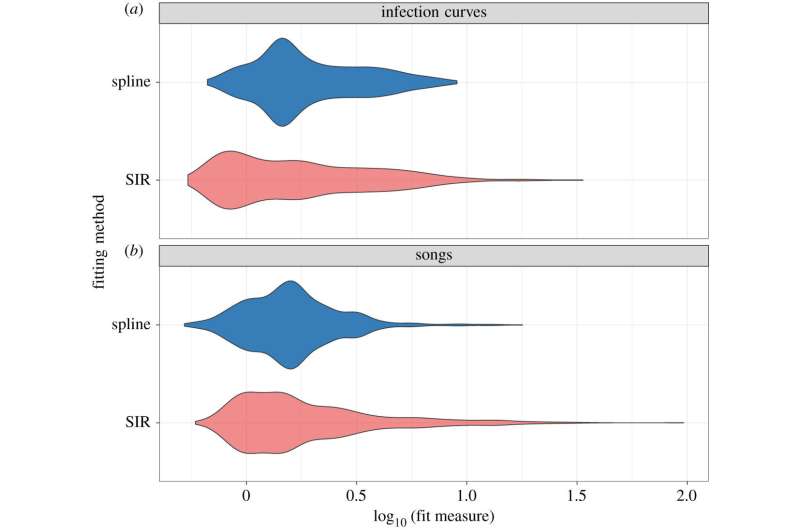September 22, 2021 report
Music download patterns found to resemble infectious disease epidemic curves

A team of mathematicians at the McMaster Institute for Music and the Mind in Canada, has found that music download patterns resemble the patterns found in disease epidemics. In their paper published in Proceedings of the Royal Society A, the group describes applying a standard model used to describe the spread of disease to a large database of downloadable music.
For many years, some songs have been considered infectious—one person might hear it and then play it for another and those people share with others until the song becomes a hit. In this new effort, the researchers wondered how closely the spread of song infections might be to real-world disease spread, such as in epidemics. To found out, the group gained access to data stored on the now defunct British music site MixRadio. The site contains information on almost 1.4 billion songs, including numbers of downloads. They then applied a model called SIR to the data. It is most often used to describe and rate the spread of infectious diseases.
The researchers found that downloads from the site very much matched patterns of diseases spreading. They note that this finding makes sense logically—the most infectious songs travel through a population much like the most infectious diseases. They note also, that in some cases, some infectious songs were far more infectious than any known disease. They suggest the finding makes sense logically as well. With infectious diseases, one-to-one contact is needed. With songs, one person might post a song on her Instagram page and hundreds of people might respond by downloading it.
The researchers also found that different genres of music were more infectious than others. Metal and dance, they found, were not infectious. Pop music was more infectious, but not as much as hip-hop and rock. But they found that electronica is the most infectious, by a very large margin. They suggest their finding likely holds clues about listening audiences. Those who like electronica, for example, might belong to a group that is more connected than others, allowing for a song to spread among them like wildfire.
More information: Dora P. Rosati et al, Modelling song popularity asacontagious process, Proceedings of the Royal Society A: Mathematical, Physical and Engineering Sciences (2021). DOI: 10.1098/rspa.2021.0457
Journal information: Proceedings of the Royal Society A
© 2021 Science X Network





















